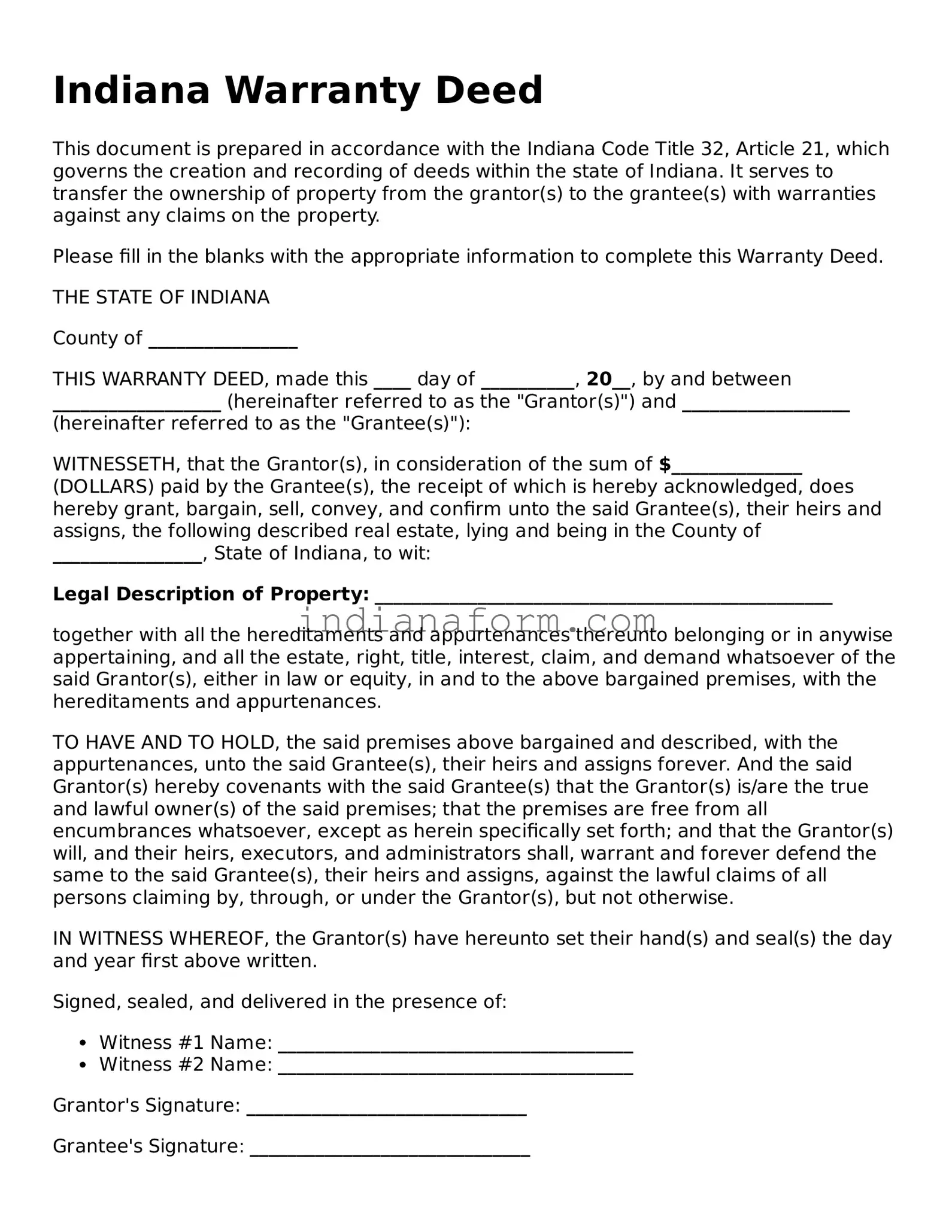Indiana Warranty Deed
This document is prepared in accordance with the Indiana Code Title 32, Article 21, which governs the creation and recording of deeds within the state of Indiana. It serves to transfer the ownership of property from the grantor(s) to the grantee(s) with warranties against any claims on the property.
Please fill in the blanks with the appropriate information to complete this Warranty Deed.
THE STATE OF INDIANA
County of ________________
THIS WARRANTY DEED, made this ____ day of __________, 20__, by and between __________________ (hereinafter referred to as the "Grantor(s)") and __________________ (hereinafter referred to as the "Grantee(s)"):
WITNESSETH, that the Grantor(s), in consideration of the sum of $______________ (DOLLARS) paid by the Grantee(s), the receipt of which is hereby acknowledged, does hereby grant, bargain, sell, convey, and confirm unto the said Grantee(s), their heirs and assigns, the following described real estate, lying and being in the County of ________________, State of Indiana, to wit:
Legal Description of Property: _________________________________________________
together with all the hereditaments and appurtenances thereunto belonging or in anywise appertaining, and all the estate, right, title, interest, claim, and demand whatsoever of the said Grantor(s), either in law or equity, in and to the above bargained premises, with the hereditaments and appurtenances.
TO HAVE AND TO HOLD, the said premises above bargained and described, with the appurtenances, unto the said Grantee(s), their heirs and assigns forever. And the said Grantor(s) hereby covenants with the said Grantee(s) that the Grantor(s) is/are the true and lawful owner(s) of the said premises; that the premises are free from all encumbrances whatsoever, except as herein specifically set forth; and that the Grantor(s) will, and their heirs, executors, and administrators shall, warrant and forever defend the same to the said Grantee(s), their heirs and assigns, against the lawful claims of all persons claiming by, through, or under the Grantor(s), but not otherwise.
IN WITNESS WHEREOF, the Grantor(s) have hereunto set their hand(s) and seal(s) the day and year first above written.
Signed, sealed, and delivered in the presence of:
- Witness #1 Name: ______________________________________
- Witness #2 Name: ______________________________________
Grantor's Signature: ______________________________
Grantee's Signature: ______________________________
